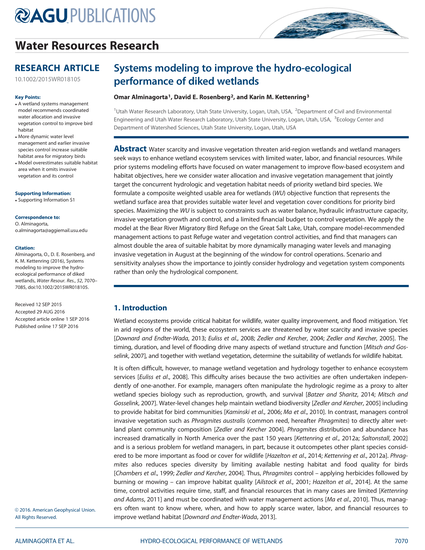
Article
Systems modeling to improve the hydro-ecological performance of diked wetlands
Water Resources Research
(2016)
Abstract
Water scarcity and invasive vegetation threaten arid-region wetlands and wetland managers seek ways to enhance wetland ecosystem services with limited water, labor, and financial resources. While prior systems modeling efforts have focused on water management to improve flow-based ecosystem and habitat objectives, here we consider water allocation and invasive vegetation management that jointly target the concurrent hydrologic and vegetation habitat needs of priority wetland bird species. We formulate a composite weighted usable area for wetlands (WU) objective function that represents the wetland surface area that provides suitable water level and vegetation cover conditions for priority bird species. Maximizing the WU is subject to constraints such as water balance, hydraulic infrastructure capacity, invasive vegetation growth and control, and a limited financial budget to control vegetation. We apply the model at the Bear River Migratory Bird Refuge on the Great Salt Lake, Utah, compare model-recommended management actions to past Refuge water and vegetation control activities, and find that managers can almost double the area of suitable habitat by more dynamically managing water levels and managing invasive vegetation in August at the beginning of the window for control operations. Scenario and sensitivity analyses show the importance to jointly consider hydrology and vegetation system components rather than only the hydrological component.
Disciplines
Publication Date
2016
DOI
10.1002/2015WR018105
Citation Information
Alminagorta, O; Rosenberg, DE; Kettenring, K. 2016. Systems modeling to improve the hydro-ecological performance of diked wetlands. Water Resources Research 52(9):7070-7085. 10.1002/2015WR018105
